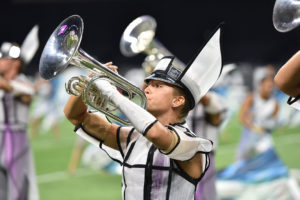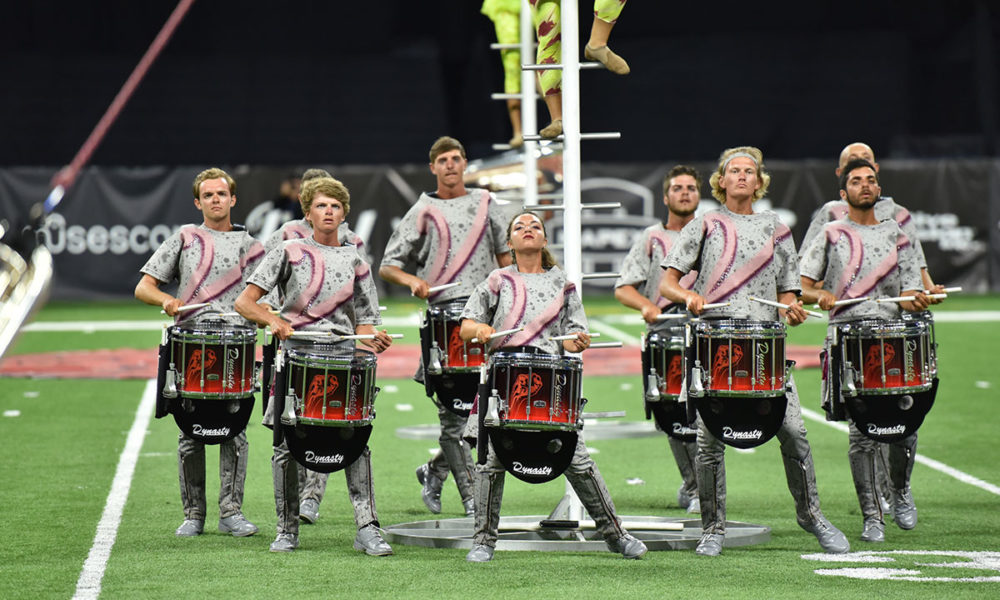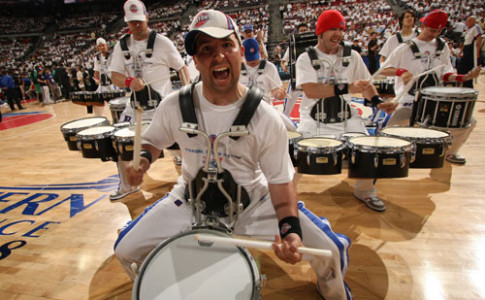As DCI shows focus more on character portrayals rather than military drill, traditional headgear may be disappearing.
Though shakos and plumes have long been a part of the iconic look associated with the marching arts, many Drum Corps International groups have foregone shakos in recent years. As corps have begun to incorporate character costuming into their performances, headwear doesn’t always fit the bill.
Santa Clara Vanguard, traditionally known for large Aussie hats with fluffy plumes, took the field without a hat in its 2018 and 2019 shows. Its 2019 “Vox Eversio” program celebrated underground and counterculture movements, featuring punk-style uniforms that left no room for shakos or plumes. “We thought: If we’re going to do this, we can’t stand out there in something that looks like a marching band uniform,” says Andy Toth, visual coordinator for Santa Clara Vanguard.
 The Blue Devils and Carolina Crown have split the difference, starting off the show wearing their caps and then removing them as their shows progressed. In 2019, the Blue Devils’ removal of shakos during its “Ghostlight” show signified a costume change, which fit with the show’s theatrical theme.
The Blue Devils and Carolina Crown have split the difference, starting off the show wearing their caps and then removing them as their shows progressed. In 2019, the Blue Devils’ removal of shakos during its “Ghostlight” show signified a costume change, which fit with the show’s theatrical theme.
For Carolina Crown, the 2019 headwear was not a traditional shako at all; it was a hat specifically designed to go with the show’s shape and color themes. “The point of using a shako is it adds vertical height and a specific point of color,” says Rick Subel, artistic director and program coordinator for Carolina Crown. “If you’re doing a lot of intricate motion and drill, it reads better from up top.”
However, dance choreography, faster movements, and the desire for individualized characterizations can make shakos impractical.
Because Carolina Crown’s 2019 show, “Beneath the Surface,” explored unseen layers beyond what’s visually apparent, shako removal was part of the program’s arc. “They started off in the full facade,” Subel says. “You were invited deeper into the personality of performer. … They removed that façade, so you can see their faces, which opened up an individualized persona by the end of the show.”
As drum corps shows become more theatrical, and performers take on the role of actor as well as musician, removing a shako allows the performer to add emotion to their character. “When you take the shako off, you’re going to get variation,” Subel says. “You’re going to see all of the skin tones, the hair colors, the freckles. But at the same time, you’re going to see the performer. You’re going to see their character, the energy and passion of their eyes.”


